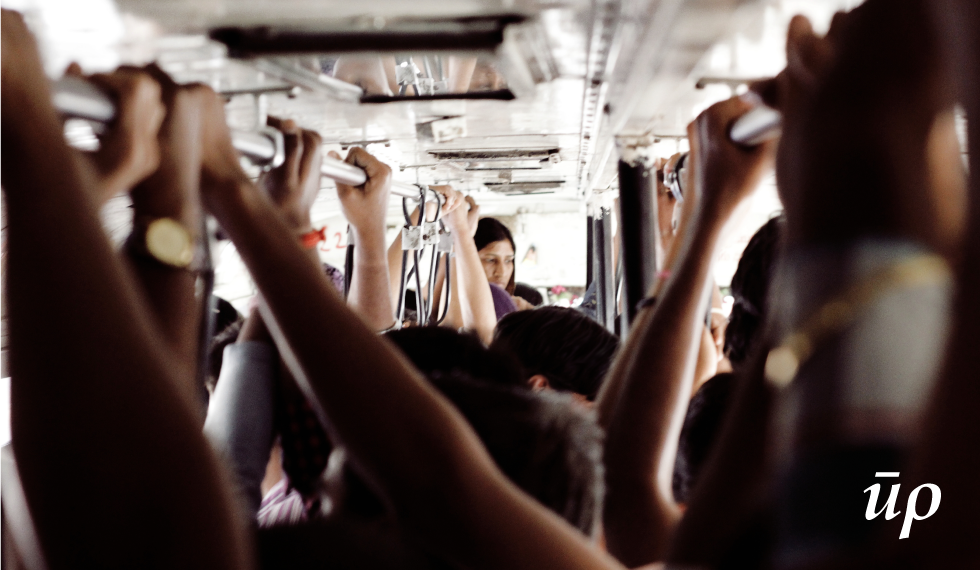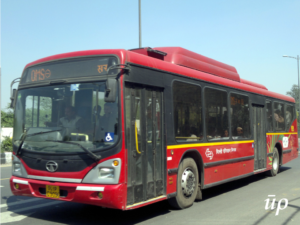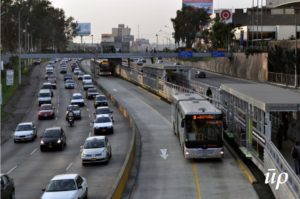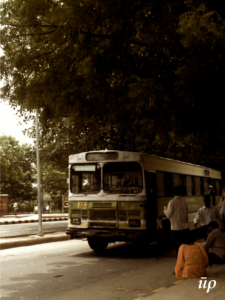Buses used to be the preferred means of commute in many Indian cities because of their practicality, wider reach, availability, cost-effectiveness and less intensive infrastructure. In city of Delhi the bus services started decent, well managed and efficient. The state run Delhi Transport Corporation (DTC) grew to cover the entire city under its 657 designated routes.
This system was diluted by allowing participation of private bus operators following revenue constraints and to employ a growing educated population in service based enterprises. But lack of far-sighted policies resulted in mismanagement of bus services, often at the hands of private operators bent on making profits. The malpractices included rash driving, unprofessional staff, avoidance of non-profitable routes etc. An ugly reign of private stage-carriages preceded reformation of bus system in the city of Delhi. The services were in shambles.
The bias in allocation of resources, vis-a-vis modes of transport, is evident in that cars occupied 70% of the road space in Delhi while carrying only 10% of the passenger load in 2009. The efficiency of a public bus is seen in the fact that it occupies about 2.5 times a car’s space but carries as many as 40 times the passengers.

Picture – Ahmed Mahin Fayaz | Flickr
The extent of Delhi’s dependence on road based public transport can be understood by RITES primary survey 2007, according to which as much as 79% of population used buses as means of travel in the city. The vast network of bus services has been declining since then; mainly due to negligence of state government. The same period witnessed rapid extension of Mass Rapid Transit System (MRTS), Delhi Metro. The latter is a welcome step but it doesn’t provide for last mile connectivity and comes with its own demerits, specially on account of increasing maintenance and construction costs, non-viability over shorter distances (since most metro stations are grade-separated, people don’t prefer them to commute over short distances) and concentration of transit benefits in bands parallel to metro routes only. The neglect of road based public transport is bringing about serious gaps in public transport system of the cities. At the same time decreasing ownership costs of private vehicles (specially cars), easy availability of finance is diminishing incentives for using public transport (of any kind).

Picture – Ramesh NG | Flickr
The last decade saw attempts at reformation of bus operations in the city. Private bus operations were consolidated in the form of cluster bus systems; in which operations of services were shifted in the hands of companies owning clusters of buses, regularising services and improving quality. But at the same time dwindling fleet of state owned Delhi Transport Corporation has resulted in reduced and irregular frequency, over-crowding and sometime disruption of routes of altogether. The prevailing scenario is one in which overall decrease in use of public transport systems, specially buses, has been observed. Use of public transport decreased from 60% in 2001 to 45% in 2008. These numbers include all kind of public transport modes, including buses and metro services.

Picture – Carlos Felipe Pardo | Flickr
A bus rapid transit system (BRT) was introduced in the city on experimental basis. The uniqueness of such system lies in giving preferential treatment to mass transit while passively penalizing private vehicles. Such system, by reserving lanes for public buses, provides for faster transit and thereby more useful time to its users. When implemented properly, a BRT system comes with multiple benefits of decongestion, safety, punctuality, environmental improvements etc. While BRT systems are running successfully in cities of Ahmedabad, Indore, Jaipur, Pune and numerous international locations, in Delhi the government’s regressive crumbling under pressure from select group of car owners is irksome and needs to be taken a sceptical view of. Government in the city should quickly review the project and re-establish the routes keeping in view the larger public interests and also developing new transit culture.

Picture – Prateek Rungta | Flickr
Besides congestion, the increasing switch of people from public to private transport is worrying for the deteriorating impact it is having on the environmental quality of the city. The impact owes to twin reasons – the public transport systems in Delhi use cleaner fuel (Compressed Natural Gas, CNG) as imposed by policy as well as given full utility the per capita emissions from public buses are far less compared to private means of transport (cars and bikes).
There is an increasing need to see the public transit systems as structures for social interaction as people are spending increasingly longer times in commute. A quality commute system should add to the overall life quality of the people being served by it. Innovative steps are required to re-popularize the public transport and retain the already established networks.

Leave a Reply
You must be logged in to post a comment.